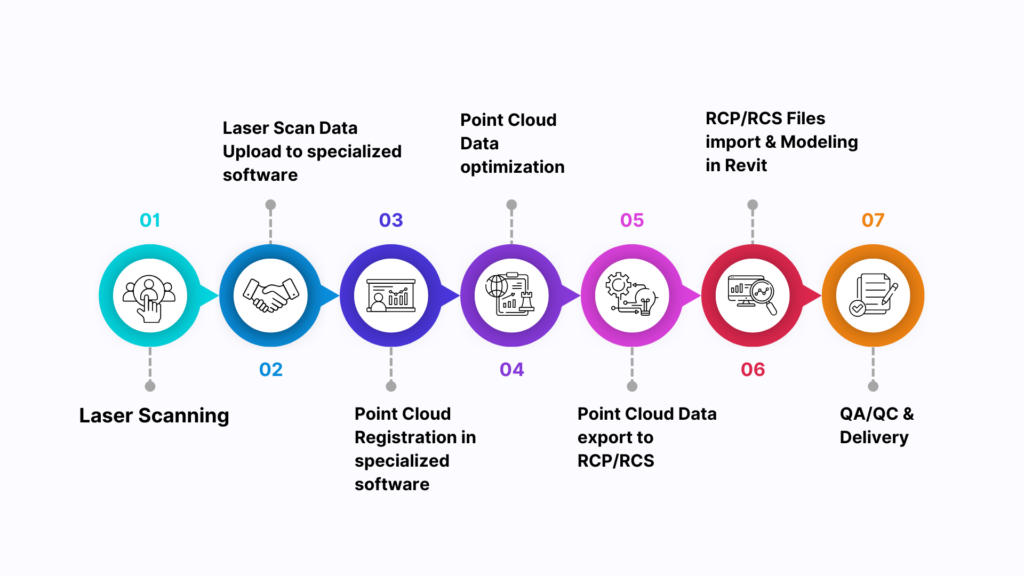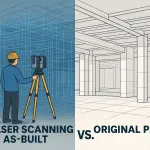3D scanning has become an essential tool across various industries, revolutionizing how we capture and analyze objects in a digital space. Whether it’s used in engineering, medical imaging, architecture, or entertainment, 3D scanning technology provides high-precision digital representations of real-world objects.
But how exactly does it work? What are the different methods used, and where is this technology heading in the future? This blog explores everything you need to know about 3D scanning, including its applications, benefits, challenges, and trends shaping the industry.
Understanding 3D Scanning Technology
Why is 3D Scanning Important?
The ability to digitally capture an object’s shape, texture, and dimensions with extreme accuracy has transformed industries that require detailed modeling, measurement, and analysis. Some key advantages of 3D scanning include:
✔ High accuracy and detail – Essential for engineering, manufacturing, and quality control
✔ Faster design and prototyping – Reduces the time needed to develop products, tools, or structures
✔ Cost savings – Minimizes material waste, labor, and time in design and production
✔ Preservation of objects and environments – Ideal for archaeology, historical documentation, and reverse engineering
At its core, 3D scanning captures the shape and dimensions of an object and creates a digital 3D model. This is done using laser beams, structured light, or photogrammetry. The resulting 3D models can be used in computer-aided design (CAD), animation, healthcare, and industrial manufacturing.
Avoid costly errors and delays with precise 3D scanning solutions. Detect clashes early, improve project efficiency, and ensure seamless as-built documentation.
Types of 3D Scanners
There are multiple technologies used for 3D scanning, each suited for different applications:
- Laser Scanners – Emit a laser beam to measure distances and create a precise model
- Structured Light Scanners – Use projected light patterns to capture surface details
- Photogrammetry – Uses multiple images to reconstruct an object in 3D
- Contact-Based Scanners – Measure objects by physical touch using a probe
- CT Scanners (Computed Tomography) – Used for medical imaging and industrial inspections
For more information on the specific scanners and technologies used by Arrival 3D, please visit their 3D Technology page.
Key 3D Scanning Techniques
1. Laser Triangulation
A laser beam is projected onto the object, and sensors detect how it changes shape, allowing software to reconstruct the 3D geometry.
2. Structured Light Scanning
By projecting a grid of light patterns onto an object, cameras track how the light bends and distortions create an accurate 3D model.
3. Photogrammetry
A series of high-resolution images from different angles are combined using software to generate a 3D model, making it ideal for architecture, gaming, and archaeology.
4. Contact-Based Scanning
A probe physically touches the object to capture precise measurements, commonly used in manufacturing and quality control.
5. CT Scanning (Computed Tomography)
Originally developed for medical imaging, CT scans are now used in non-destructive testing (NDT), industrial quality checks, and internal structure analysis.
Where is 3D Scanning Used?
1. Manufacturing & Industrial Applications
✔ Used for reverse engineering, quality control, and part inspections
✔ Helps in rapid prototyping and custom product development
✔ Reduces production costs by improving precision and efficiency
2. Architecture & Construction
✔ 3D scanning in BIM (Building Information Modeling) enhances accuracy in construction
✔ Helps in historical preservation and restoration projects
✔ Facilitates structural analysis for safety and stability
3. Gaming & Entertainment
✔ Motion capture technology enables realistic animations in games and movies
✔ 3D asset scanning makes digital environments more immersive
✔ Used in VR (Virtual Reality) and AR (Augmented Reality) applications
4. Archaeology & Heritage Preservation
✔ Digitization of artifacts and monuments for research and restoration
✔ Virtual museum exhibits allow for remote exploration
✔ Preserves cultural heritage through 3D mapping of historical sites
5. Automotive & Aerospace
✔ Used in vehicle crash analysis, aerodynamic testing, and design optimization
✔ Helps in restoring classic cars with precise 3D models
✔ Supports the aerospace industry with precision part manufacturing
Advantages and Challenges of 3D Scanning
✅ Key Benefits
✔ Ultra-high accuracy – Perfect for engineering, design, and quality inspections
✔ Time-saving & cost-efficient – Reduces manual work in production and prototyping
✔ Non-destructive – Scans objects without damaging them
❌ Challenges to Consider
⚠ High equipment costs – Advanced 3D scanners can be expensive
⚠ Complex software requirements – Processing scan data requires powerful computing
⚠ Environmental limitations – Outdoor scanning may be affected by lighting conditions
The Future of 3D Scanning
1. AI & Machine Learning Integration
✔ Automated defect detection in manufacturing
✔ Faster, more intelligent 3D model generation
✔ AI-enhanced image processing for photogrammetry
☁ 2. Cloud-Based 3D Scanning
✔ Remote access to scanned models
✔ Collaboration across multiple locations
✔ Integration with IoT and smart factories
3. Portable & Mobile 3D Scanners
✔ Smartphone apps are making 3D scanning more accessible
✔ Increased use of AR & VR in retail, education, and training
✔ Compact and handheld 3D scanners are transforming various industries
Read more about Emerging Trends in 3D Mapping and Scanning Solutions!
Final Thoughts
3D scanning is reshaping industries by providing unmatched precision, efficiency, and digital replication. With advancements in AI, machine learning, and mobile technology, the future of 3D scanning is brighter than ever.
Whether you’re in manufacturing, healthcare, architecture, or gaming, adopting 3D scanning technology can provide a competitive edge and open doors to new possibilities.
Are you ready to explore the world of 3D scanning? Contact Arrival 3D today! We are a nationwide 3D laser scanning and Scan-to-BIM company, delivering high-precision solutions.








